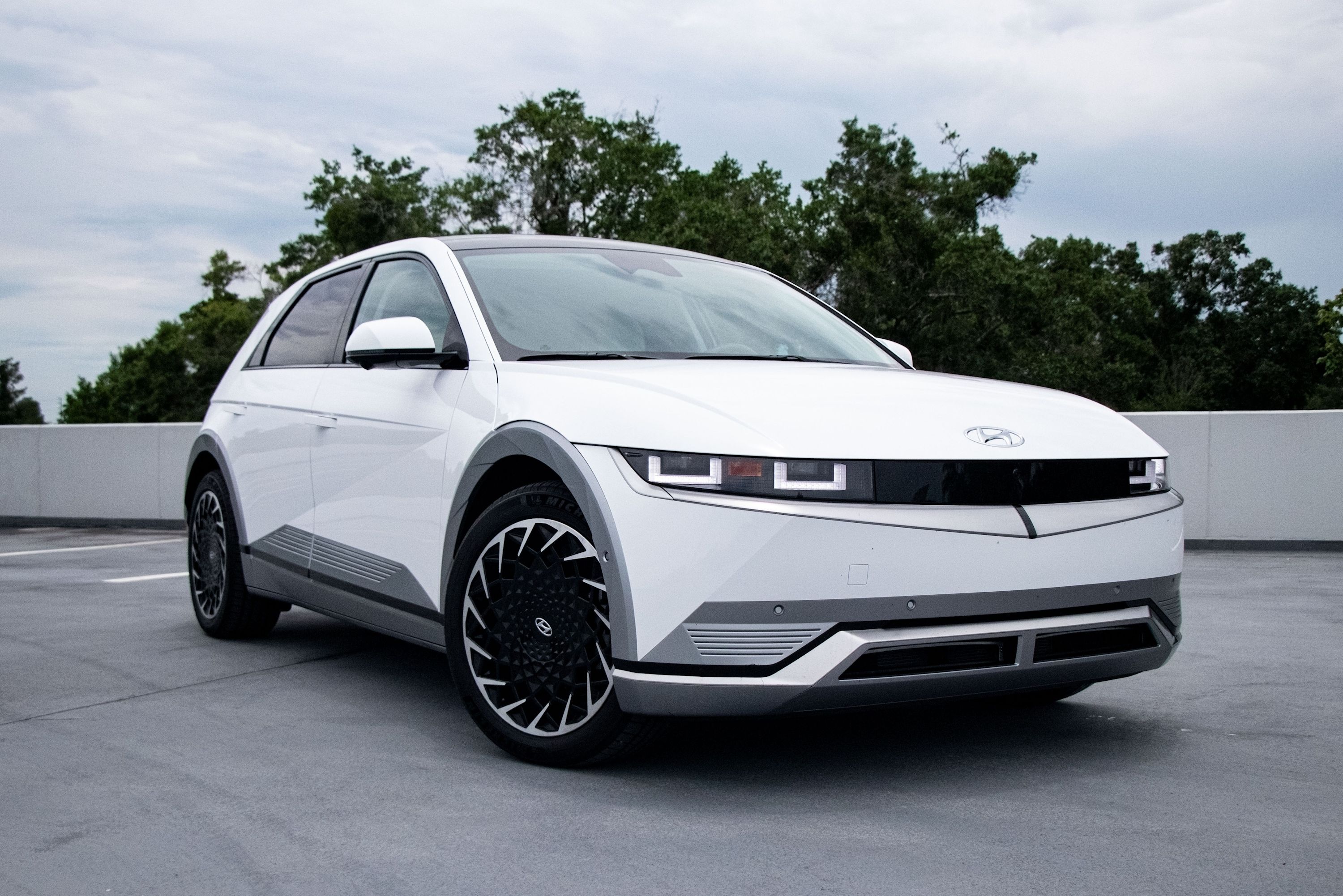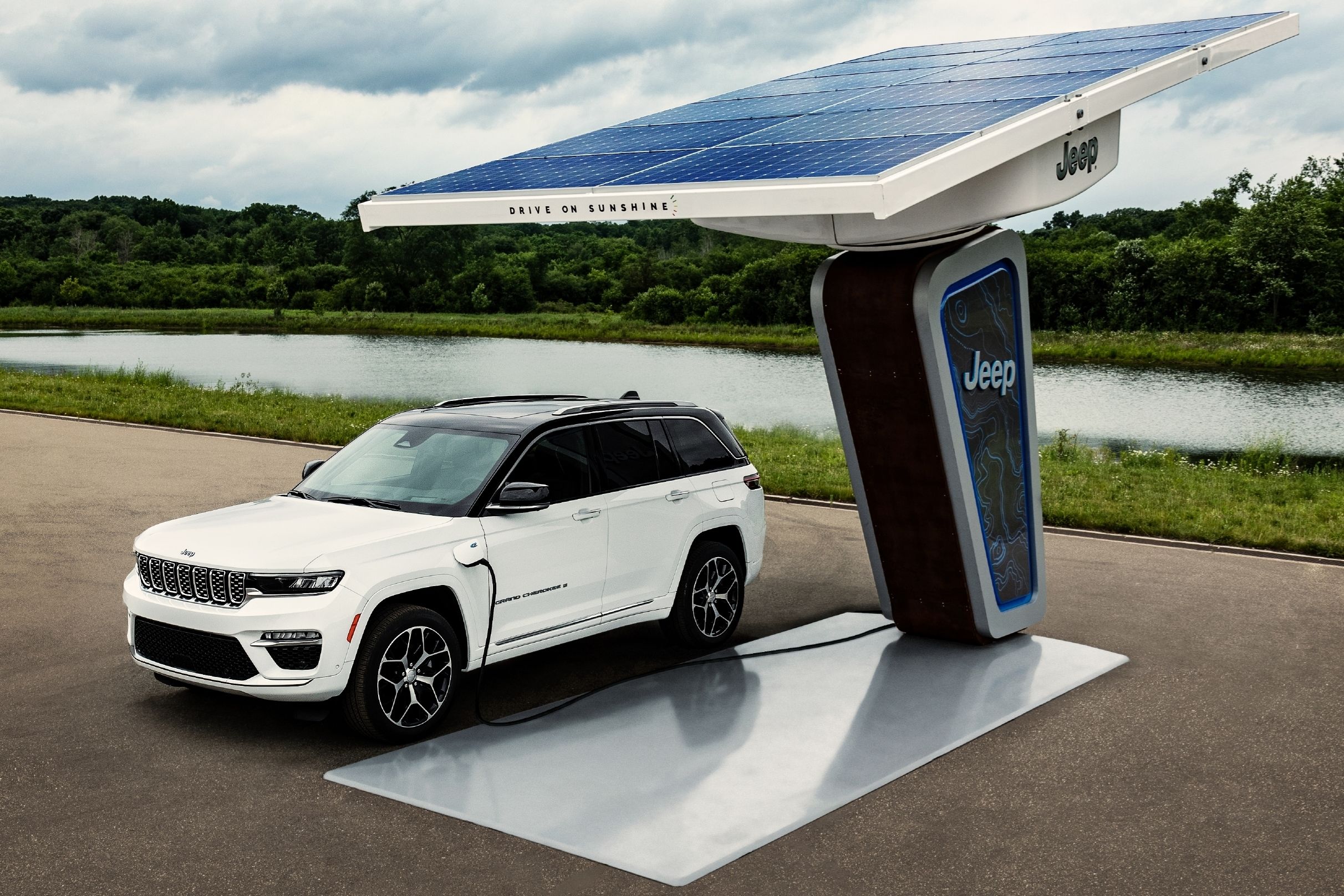
Tech blogs became interested and are still fascinated by plug-in electric vehicles because new technology is exciting. Add to that the move into connected technology to the point cars are, essentially, becoming computers on wheels, making the reason cars have crossed over to media typically fascinated by the latest graphics cards, processors, computers, and cell phones becomes obvious.
The problem with new technology is that it needs what's known as early adopters. New technology always arrives with issues that need to be ironed out over iterations. The early adopter (physical tech or software) needs to be patient and understand they will encounter problems and frustrations. For example, the phone in your pocket or purse didn't magically appear as a relatively inexpensive, powerful small computer that fits in your pocket with a smooth operating system, a great camera, and many apps. It started as a chunky telephone with a short battery life that couldn't fit in a pocket and couldn't even send a text. Even now, you go into areas with no connectivity, so imagine what that was like ten, twenty, and thirty years ago.
Thankfully, cars are already well developed, and we're just changing how they are powered. However, the early adopter caveats still apply. We're only ten years into all-electric cars becoming viable, in the form of the Tesla Model S, for some people as an alternative to gas-powered cars. Now, we have relatively affordable vehicles with a realistic range of around 200 miles on, typically, an 80 percent charge.
This article isn't here to scare you off buying a plug-in electric vehicle; far from it. However, anyone thinking about making the switch from gasoline or hybrid power should know what they are getting into as an early adopter.
Technology Advances Fast
The internal combustion engine (ICE) has been consistently and heavily developed for over one hundred years. It's now a mature technology, meaning it's reliable, inexpensive, well-supported, useable by everyone, and relatively efficient. Electric cars have been around before, but it's only been the last ten years that battery and electric motor development for cars has started in earnest and intends to replace internal combustion engines. That means batteries are still bulky and expensive. Over the next five years, a few things are almost guaranteed to happen. Batteries will become safer while holding more charge for the same size, and a new type of battery will come to market.
For the early adopter, that means it's likely the car you buy next week will be superseded by something in a year, and in two or three years, that car will already be heavily out of date. Unlike phones, not many people habitually upgrade a car every one, two, or even three years. A new car is the second largest investment people make in their lives, after a house. With EV technology moving so fast, your investment in a car tomorrow will not hold its value like cars have before. So, when you get the urge to upgrade your EV, the trade-in value won't be high. You'll either have to take the heavy financial hit or keep driving your EV with its now degrading battery.
Charging Network
The charging network is still young, and at the time of writing, there are 47,005 charging locations in the US based on data from the US Department of Energy. That's stations, not individual chargers - there could be one at the station, or ten or twenty. The vast majority are Level 2 chargers (around 41,000), meaning you'll need 45 minutes to an hour to get back to an 80 percent charge. As of the time of writing, unless you drive a Tesla, you will not be using a Tesla charger. For reference, the American Petroleum Institution tells us there are around 145,000 gas stations.
Our experience so far has involved sitting in Walmart parking lots a lot as there are not a lot of gas-station-style charging stations around yet. It's also become a crapshoot whether they will work, and as chargers are largely left unattended and uncared for, vandalism and graffiti aren't uncommon.
Home Charging
As the charging network is a long, long way from matching the convenience of gas stations, charging at home is the logical move to make. Unfortunately, if you don't have a garage or access to parking with chargers installed and park on the street at night, you're just plain out of luck. Someday there might be charging access via the network providing electricity to street lamps or something, but that's a long, long way off. For now, you only have the ability to charge at home if you have a garage and, ideally, a 208-240-volt outlet for Level 2 charging. A typical American 110-volt outlet is going to charge a car too slowly for a significant overnight charge. The good news is that some automakers selling electric vehicles are making sure a charging station for a home is relatively inexpensive. Without help or deals, having a level two charger installed will cost likely cost around $2,000 - provided the bones of your house can accommodate it without an overhaul, which is a problem for those with old houses.
Battery Degradation And Charging Practices
This writer's current iPhone is two years old, and the battery has degraded by eleven percent. The lithium battery in a car is no different, but it gets hotter when used, and heat is the enemy of a battery's life expectancy. If you live in the desert, that's going to exacerbate battery degradation. Extreme cold is not much better, although batteries warm up to optimum temperature when used. Depending on the battery technology as well, charging can degrade a battery; hence many current EV makers (it depends on the technology) recommend only charging to 80 percent of capacity as a general rule. Regular fast charging with a battery that isn't actively cooled won't help battery life either. Good charging practices are essential to making your battery last longer.
Predicting the speed of battery degradation isn't an exact science yet, but we've seen automakers say a 20 percent loss over five years is expected, and most experts suggest the lifecycle of an EV battery is around ten years. That is likely why federal law requires EV batteries are warrantied for at least eight years or 100,000 miles. California requires a 10-year, 150,000-mile warranty on EV and hybrid batteries.
That all sounds fine and reasonable, but you can expect a gasoline engine, the most expensive part of a traditional car, to go well over 100,000 miles without major repair. Current batteries can't be repaired. They need to be replaced. Owners of older vehicles are learning how expensive batteries are now. Recently, we reported on a Chevy Volt owner being quoted $29,842 by a dealer to replace the 16-kWh battery in the hybrid vehicle. While Rivian offering an eight-year, 175,000-mile warranty sounds attractive on the R1T, we don't know how much a replacement battery will cost in eight years. It should be cheaper, but as an early adopter, you're rolling the dice as to how much cheaper.
It could go the other way. With less to go wrong, an all-electric car has fewer moving parts to go wrong, so it should be cheaper. In eight years, your lithium battery could be replaced with something a lot cheaper, lighter, and degrade slower. Or moderately more affordable but still expensive. Or just ten percent cheaper.
Electricity Prices
One of the biggest upsides of driving an all-electric vehicle is the price of electricity versus gasoline. This is as general as hell, but the current price to charge a car to 300 miles of range is around $10-$14. Most traditional gasoline-only cars range around 250-300 miles on a full tank, so you can do the math there. However, it's absurd to think that as electric cars become more commonplace, electricity isn't going to become more expensive. Energy companies know what the market can bear for fueling a car just by driving past a gas station. And gas companies know exactly how to raise that price just beyond the inflation rates. You've noticed gas prices go up and down, but never cheaper than the lowest rate in the last few years, right? The idea that electric companies and charging networks won't use the same model to keep profits rising over the years is magical thinking.
Should You Be An Early Adopter?
That's a nice subheading above, but an impossible question to answer. Our advice is to scout the areas on regular routes, then pull up your calculator app and do some math. The rest depends on your predictions for the future. For example, if you don't think electricity prices will surge over the next eight years and driving an electric car will save you extra money from needing less regular maintenance, all while batteries get drastically cheaper by the time you need to replace them or buy a new car, the math will probably add up. If you think battery technology will get better but slowly decline in price while electricity prices rise, the math may work, or you might be better off going hybrid.
However, if you buy an electric vehicle on the basis that it's cool new technology that you believe is the way forward and want to support it with your dollars come what may, then congratulations - you're a true early adopter. Go ahead and buy that Ford Mustang Mach-E or Hyundai Ioniq 5. We applaud you. Just don't complain when the ownership process isn't as easy as you were used to before.

